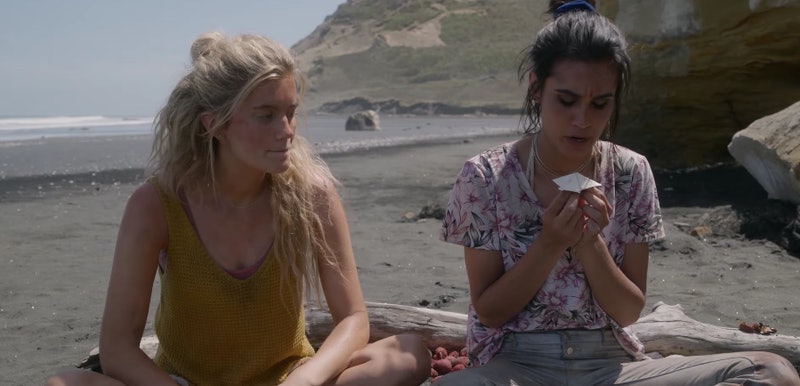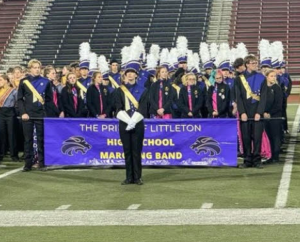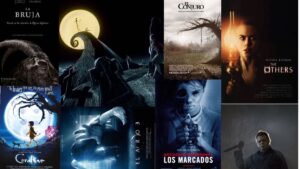The Wilds, released on December 11th on Amazon Prime Video, has shown to be one of the most promising series’ to appear in recent months. The episodic series centers around a group of teenage girls who become stranded on an island after a plane crash, unaware of their being the subjects of a social experiment. Despite many of the actors having never worked on productions of such scale before, the show is well-acted, directed and produced with care, and relatable for teenagers in several ways.
The most prominent relatability issue worth noting is the accurate depiction of the characters’ physical appearance. As detailed in several articles recently released by the Lion’s Roar Now, the media is one of the biggest contributors to body dissatisfaction among teens and young girls. The actresses are in their early twenties, remarkably different from dramas like Riverdale that feature cast members playing characters half their age. Their body types accurately reflect factors such as economic status and whether or not their character plays a sport – a welcome deviation from the unrealistic standards thrust on teens by the lack of body representation in television. There is no ‘token fat girl’ and the cast boasts racially diverse actresses that don’t exist solely for the purpose of being diverse.
Importantly, the show takes place over several days, and as the characters are exposed to the elements of living in extreme conditions, the makeup team ensures that they look the part. Sunburns, dirt smears, and greasy hair begin to afflict the cast as the episodes march on. The touch is appreciable because shows often forego such ‘imperfections’ in place of effortless glamour. The girls aren’t objectively attractive all the time, because they shouldn’t be. By making the decision to highlight realism as opposed to beauty, the show not only becomes more stylized (gritty and reflective of their harsh surroundings) but builds characters that feel alive, feasible.
Secondly, the program showcases multiple LGBT characters. While poorly written TV will often make a character’s sexual orientation or gender identity a central part of their persona, (by way of elaborate coming-out subplots or offensive depictions of queer relationships bordering on fetishization) The Wilds skillfully acknowledges the elephant in the room without letting that fact define a character entirely.
On a larger scale, the show maintains this attitude through every aspect of each character’s persona. In reality, the pieces of our life do not directly cause our actions or future. Rather, we are an amalgamation of everything we have ever experienced, each piece of media we’ve consumed, and the relationships we formed along the way. Each character is shown to be whole, and their actions are informed by their exposition, not induced. Television can often fall into predictable writing patterns using background on each character to define what their life on-screen will look like. By contrast, The Wilds ensures that each character is given the opportunity to develop beyond their predefined idiosyncrasies.

In the first few episodes, the characters can occasionally appear as classic stereotypes of teen girls, but as the series progresses, they are fleshed out in thoughtful, realistic ways that accurately represent the intelligence and distinctiveness of the target audience.
It slowly becomes more apparent that these predictable introductions are not naive, but rather intentional groundwork laid for the purpose of subversion. They are characterized by their experiences but refuse to be put into a box. The portrayal is a refreshing break from the poor writing that shows, such as the previously mentioned Riverdale, allow.
In Riverdale, not only are the characters alarmingly oversexualized but they also can come off as shallow and incomplete. Aside from the two main female roles, the girls in the show are mere props or excuses for diversity. Rarely are they ever fleshed out to the extent that they have discernable personalities, nor are they highlighted for aptitudes that don’t drive the plot forward.
The secret to writing believable characters is to give them lives and temperaments that aren’t overly dramatized and actually differ from other characters featured on the program. The Wilds executes this tactic perfectly, and each character plays an important role in the group but can stand on her own as well. Their relationships with one another are messy and real, passing the Bechdel test, Ko test, and Peirce test, with flying colors.
These measures of authentic intersectionality are important to the representation of minorities and indicate how a show or film tackles issues not central to straight, white men. There are feuds, and fights, intermingled with wholesome moments of camaraderie and courage. Social hierarchies form and various dynamics are explored. There is little to criticize about the bonds the girls share, and for once I feel like I can really see the relationships between girls in the real world accurately reflected on the screen.
In this day and age, teenagers are consuming more media than ever. Though shows like Riverdale can propagate harmful stereotypes about teenage girls, The Wilds proves that there is hope after all. By portraying interesting, distinct, and relatable characters, we see that bravery and strength know no bounds within our souls. Recently renewed for a second season, there are high expectations for what else writer Sarah Streicher will achieve. The Wilds is out now on Amazon Prime Video for your viewing pleasure.





